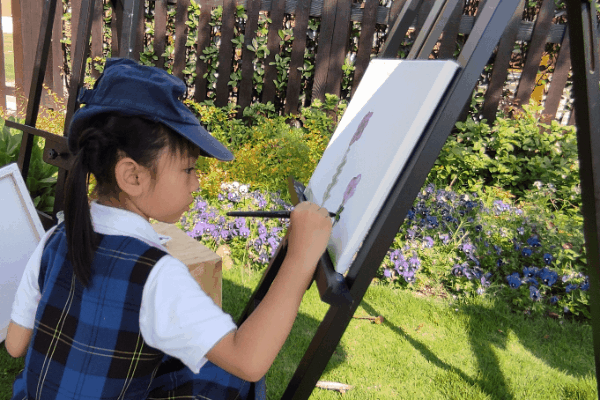
Irina Pinelli
Atelierista
The senses, such as sight, smell, hearing, taste and touch, are our great allies in daily life. They allow us to analyse the surrounding world, decode emotions and recognise elements of danger. By learning to read our senses correctly, we have a deeper understanding of our bodies and the world we inhabit.
Children live through the senses. Sensory experiences connect the external world to the inner, hidden, and effective world. The natural environment is the primary source of sensory stimulation. Therefore, the freedom to explore and play with it through the senses is essential for the healthy development of the inner life.

Uncovering the detail between nature and technology
The new digital age offers numerous opportunities and virtual stimuli that every day remind us of the absolute supremacy of one sense over all the others: sight.
We should ask ourselves at what level the visual stimulation is working. Seeing cannot always be passively absorbing an image. Educating the gaze means learning to observe and look at the world with attentive and different eyes.

Nature offers us an excellent opportunity for observation. It is never equal to itself; every individual element in nature is unique. Biodiversity provides us with a wide range of aspects to explore and train our eyes to search for shades and colours that a distracted eye would not be able to grasp. Thus, we discover that the leaves are not always green, that the yellow of a flower has infinite shades, and that each element of a pinecone is different from the other.

In the same way, all the other senses must also be educated and experienced to have a more extensive and complex understanding of the surrounding world. For example, exposing children to a daily sensory experience means making them capable of recognising different rhythms of music, knowing how to categorise flavours, memorising a smell, activate touch to master categorisations such as smooth, rough, sandy, soft, hard, hot or cold.
Stopping and taking the time to observe the world around us carefully is a healthy exercise for children and adults too.
The attention to detail refines the acute and selective gaze, nourishes, and activates all the senses. The exact details cannot escape and can be intercepted and assumed as elements of play, design and research.


The new technology can be used as a powerful ally in pursuing attention to detail. Used in an analogical sense, it can foster an even deeper connection with the world around us. For example, photography allows us to isolate an element from its context, look at it after some time, and reinterpret it to create a new story. Projectors, drones and microscopes can also introduce us to the world of the macro and the micro of things, observe the world from multiple points of view with a scientific eye, being attentive to what we are looking at. There are no good or bad tools. Whether natural or digital, each of them can offer a new opportunity for discovery, growth, experimentation, and research is used as a scientific tool.